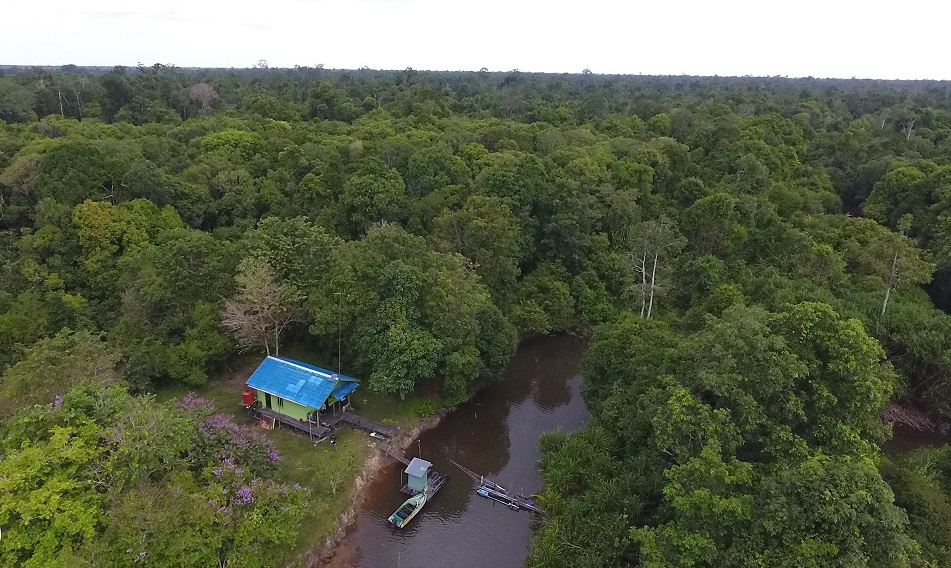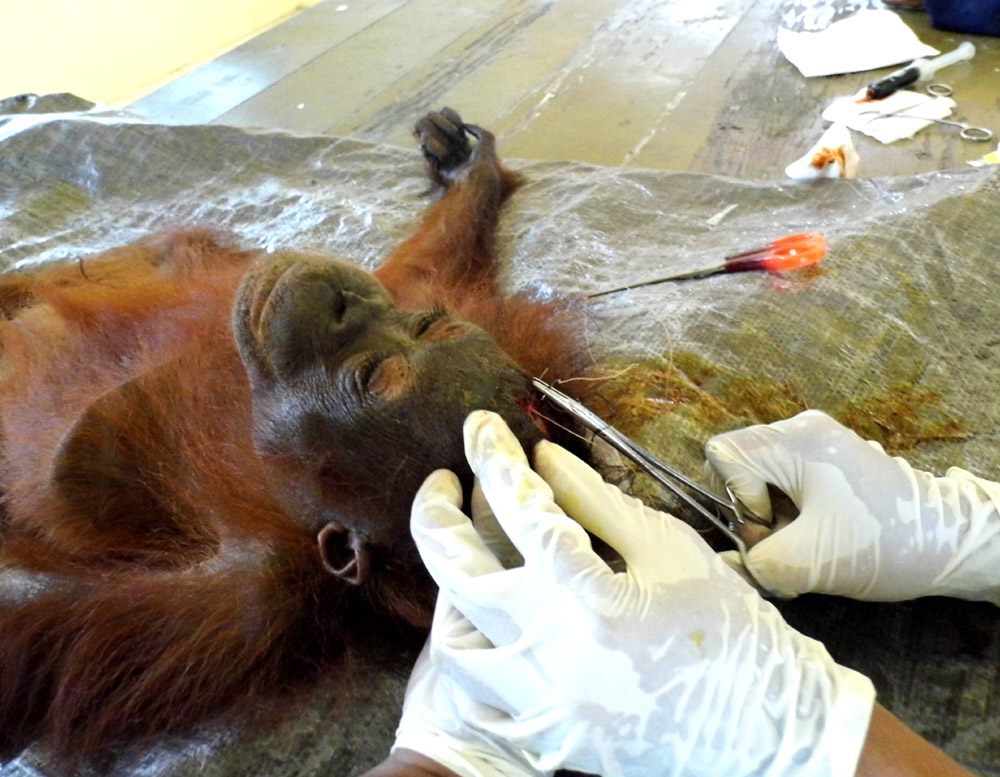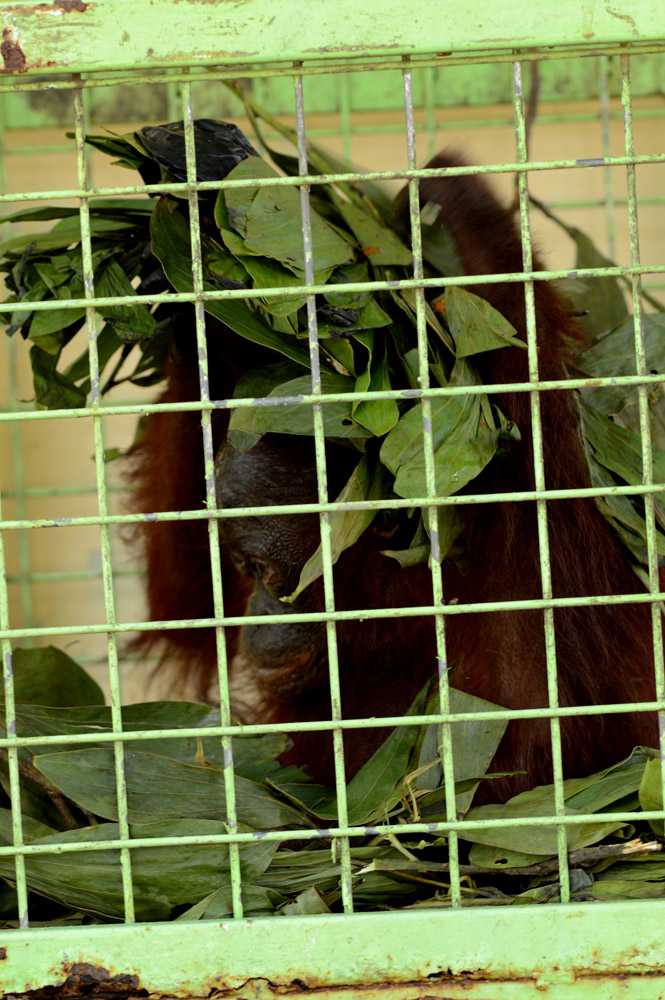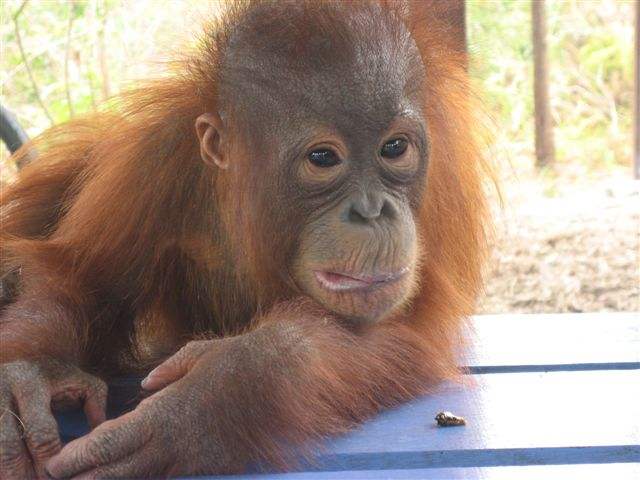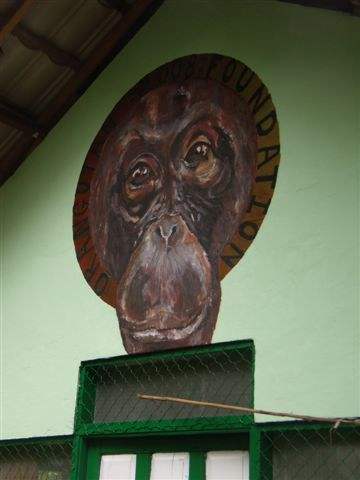Orangutans, biodiversity, forest, research, and fundraising. A look back at the critical conservation success we have had together in 2024.
Partnerships for Protection
Most people’s idea of orangutan conservation would evoke a picture of a life in the wild, tracking these charismatic apes through the forest, rescuing and releasing them into a sunlit canopy. While this is one element, the reality of our work is a much bigger picture.
Release of orangutan back into the wild
Orangutan conservation must address the complex issues affecting the wider landscape and habitat, and this involves an in-depth understanding of land management and negotiation with government, communities, and private sector stakeholders. It sometimes feels far from the animals in the forest, but it’s fundamental to their future survival.
This week, Orangutan Foundation and the Central Kalimantan Wildlife Department (BKSDA) held a workshop on Management of Wildlife in Protected Forest and Production Forest Areas and a Forum on Orangutans and Oil-Palm Plantations. There were more than 30 participants from parties including the Directorate of Biodiversity Conservation (KKH), Ditjend KSDAE-Ministry of LHK, Central Kalimantan Orangutan Forum (Forkah), Central Kalimantan Forest Service, Orangutan Foundation (OF-UK Indonesia), Korindo Group, Wilmar Group, and Central Kalimantan BKSDA.
Workshop participants including Directorate of Biodiversity Conservation (KKH), Ditjend KSDAE-Ministry of LHK, Central Kalimantan Orangutan Forum (Forkah), Central Kalimantan Forest Service, Orangutan Foundation (OF-UK Indonesia), Korindo Group, Wilmar Group, and Central Kalimantan BKSDA.
Forum on Orangutan and Oil-Palm Plantations
The big issue for the Bornean Orangutan species is that 80% of the population are extremely vulnerable, as they live in forest habitats with no active protection (i.e. not inside a national park or wildlife reserve).
Active habitat protection: Orangutan Foundation guard post monitoring the Lamandau Wildlife Reserve, Central Kalimantan Indonesian Borneo
These forests, which have been shrinking dramatically over the last few decades, and the animals that live there, are at risk as most of them are in active ‘concessions’ – areas where access to the land has been granted for some form of industrial use. There are many different legal designations, including natural timber concessions, industrial timber plantations and areas of forest still remaining inside oil-palm concessions, as well as forests on community lands. There are also areas of ‘Hutan Lindung’, Protection Forest, a special designation where the forest provides a wider ecosystem service to protect soils and water catchment. Proper management of these forests is crucial to mitigate conflicts between humans and wildlife and to reduce the number of isolated orangutans that end up needing to be rescued.
At the end of the two days, all of the participants agreed to sign a joint commitment to implementing Best Management Practices focused on the protection of orangutans and wildlife in Production Forests and Protection Forests, as well as in oil-palm plantations. This is a vital step forward in securing the survival of the Bornean orangutan; and for this we are very grateful for the continued support from all our members and donors and in particular, to the Arcus Foundation. The next step is to ensure these commitments made on paper translate to commitments on the ground.
Wild Bornean female and infant orangutan. By Ian Wood
Stop habitat loss, stop orangutans being killed
In the last month we have heard disturbing reports about the cruel and brutal killing of two critically endangered Bornean orangutans. Sadly, our staff care for the victims, of these sort of actions, every day. We're still caring for Aan, shot 104 times and left permanently blind. Little Bumi, rescued last year, 8 pellets removed, his mother must have been shot and killed.
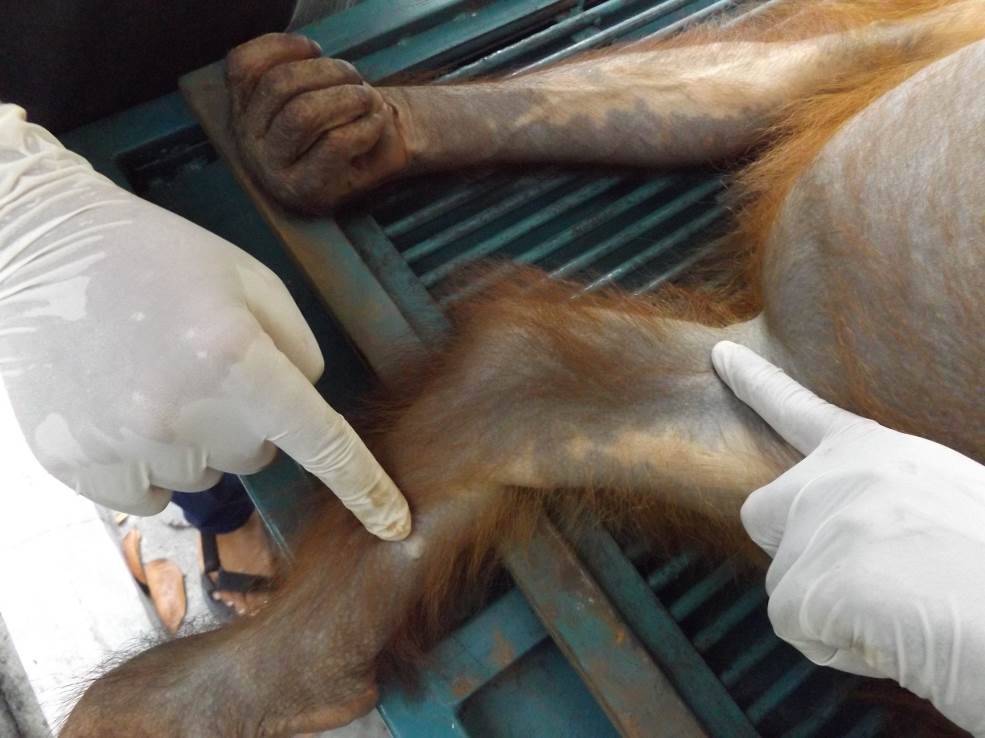
We ask ourselves, how could someone harm these gentle, intelligent and peaceful beings?
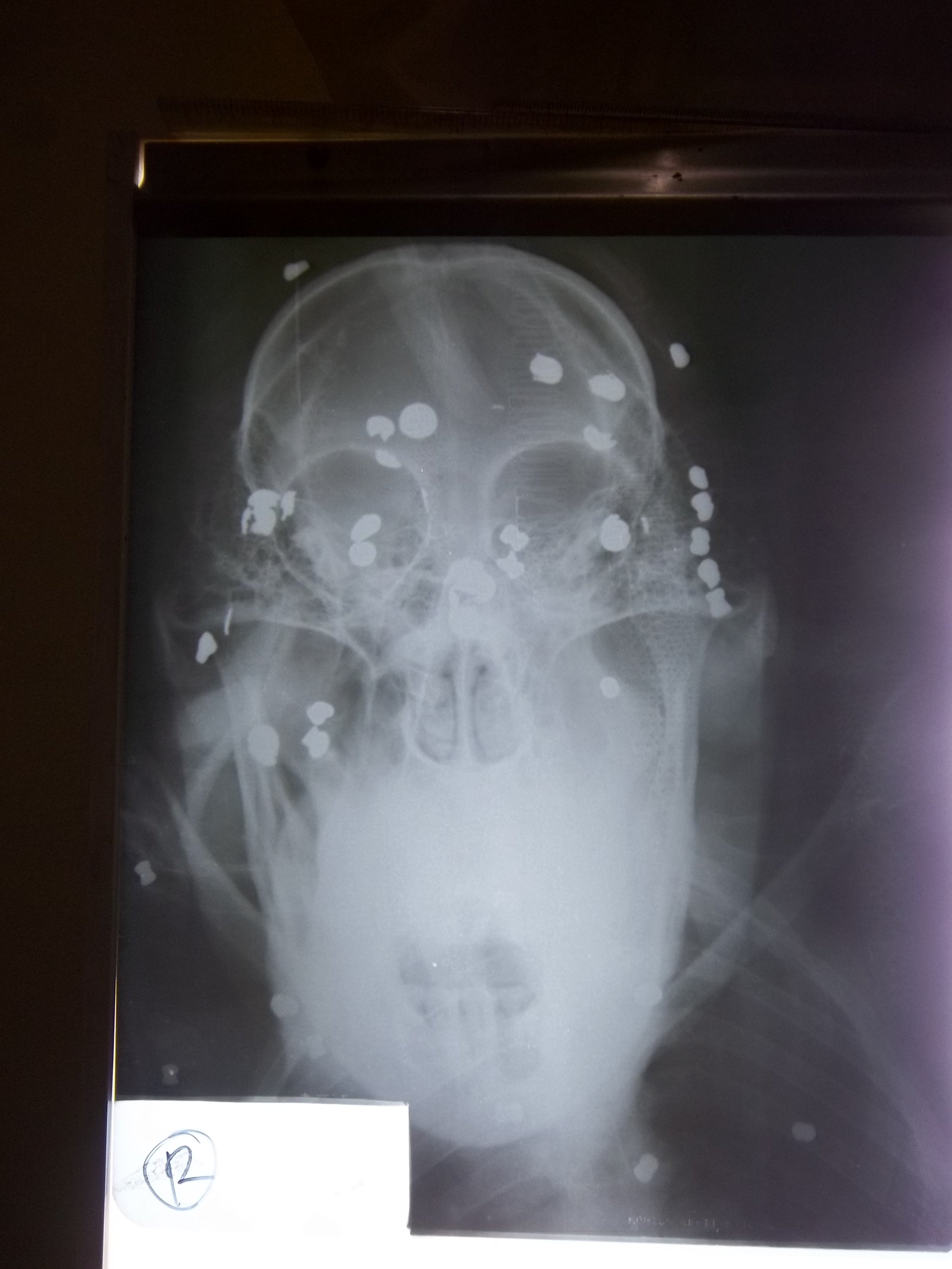
The killing of an orangutan is a visible threat, rightly generating shock and outrage. The invisible threat that forces orangutans into increasing contact with humans, onto oil-palm plantations or village farms, is habitat loss. We use the term invisible because habitat loss does not elicit the same level of response as an orangutan killing.
In the last month our guard post staff have tackled illegally lit fires and prevented them spreading, but still 30 hectares burnt. This week, they detected the second case this year of illegal logging, right on the boundary of the Lamandau Wildlife Reserve. This is meant to be strictly protected forest, it has a population of over 500 orangutans. We need to keep it protected and the orangutans safe.
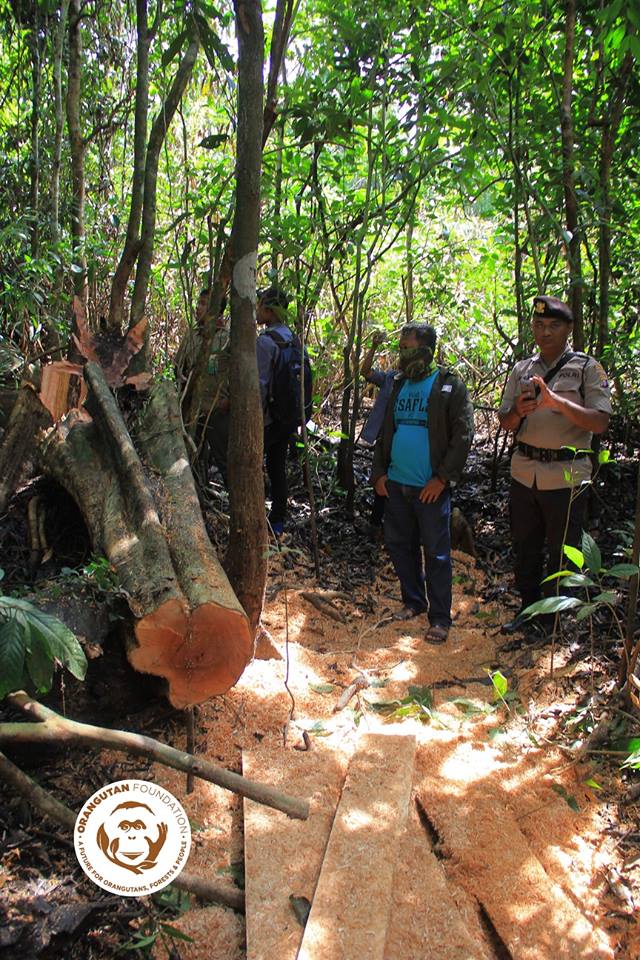
Why does the image of a fallen tree not also generate the same outrage? When forests are cleared, orangutans and hundreds of other species are harmed or even killed. Some survive, if they can move to another area of forest. This increases competition for resources and forces them into closer contact with humans. It is because we can’t see the immediate impact on orangutans and so our response is different.
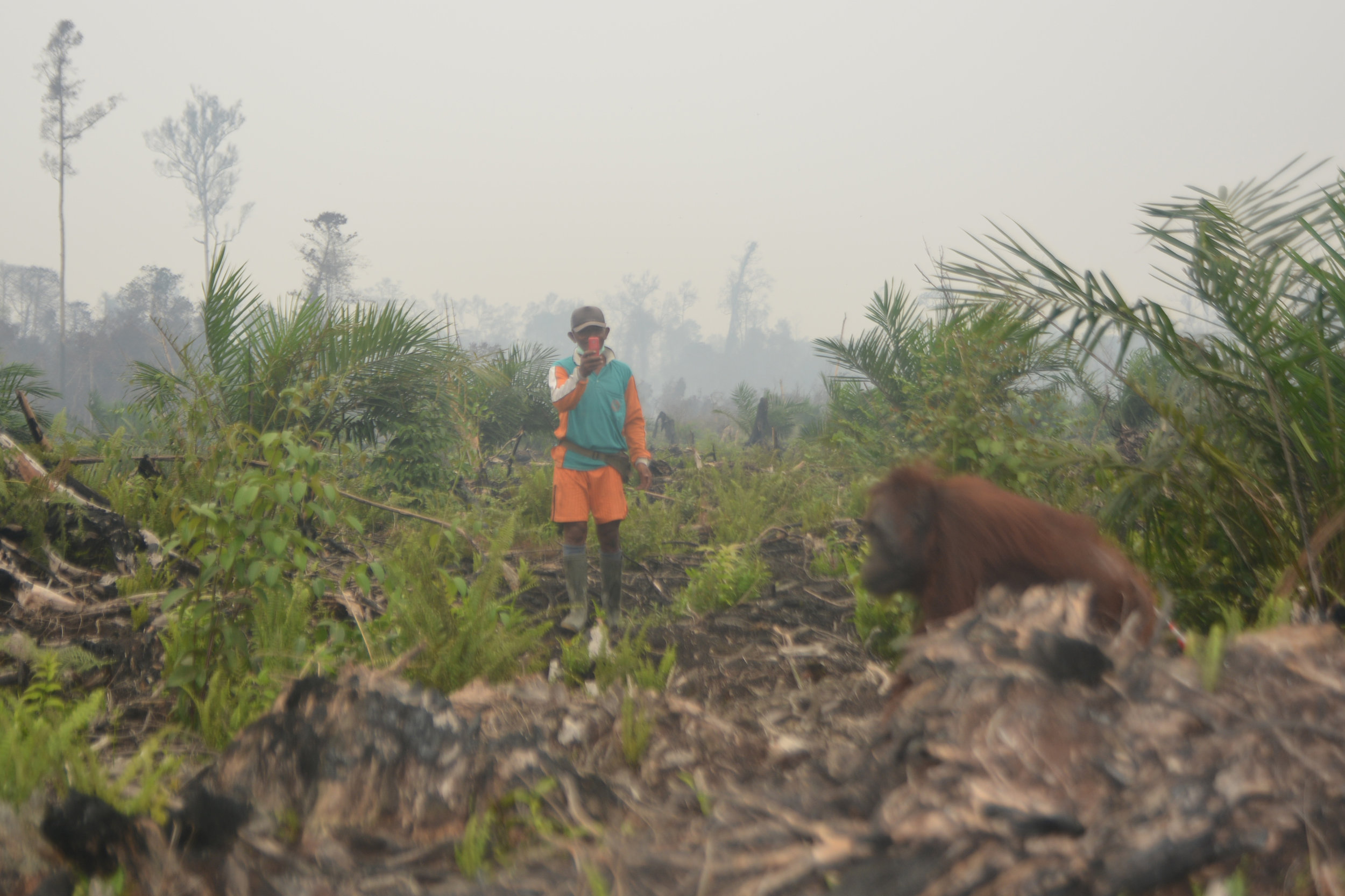
We need your help now, more than ever. Our guard post patrol staff require ongoing support to prevent illegal activities and further loss of orangutan habitat. The Lamandau Wildlife Reserve is huge, 158,144 acres of tropical forest (one acre is the approximate size of one football pitch). Our staff do a fabulous job patrolling such a large area but need to be supported.
Please help us to keep these vital forests standing and their precious inhabitants in wild. Please donate today.
If you can, please consider becoming a Guardian of Lamandau Wildlife Reserve, from £16.50 a month (the equivalent of 55p a day) you can make a significant difference. Thank you.
We thank the West Kotawaringin Police, KPHP Kotawaringin Barat, and BKSDA Kalteng for their joint patrols.
Wild cats at Pondok Ambung station, Indonesian Borneo
Below are some images taken from camera traps at Pondok Ambung Research Station, Tanjung Puting National Park. In 2017, Orangutan Foundation, awarded three research scholarships to Indonesian students. One of them is Reza Bayu Firmansyah. Reza is conducting research on the density and distribution of wild cat species to complete his Master's Degree at UGM - Gajah Mada University.
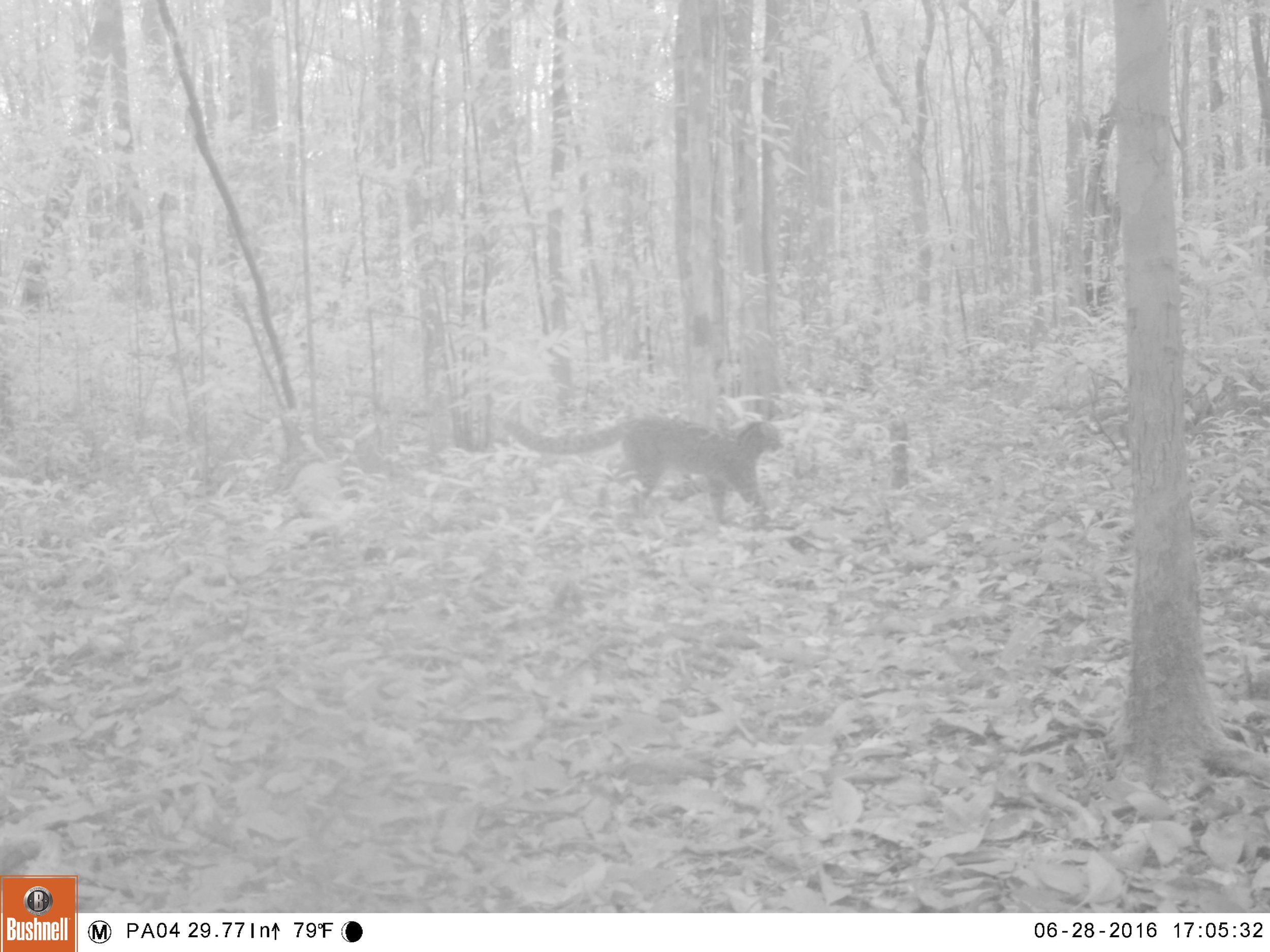
Around the Pondok Ambung Research Station area our staff and Reza think there are 3 individual clouded leopards (Neofelis diardi) all from one family. A male, female and juvenile this based on their size and where they where and when they were photographed.

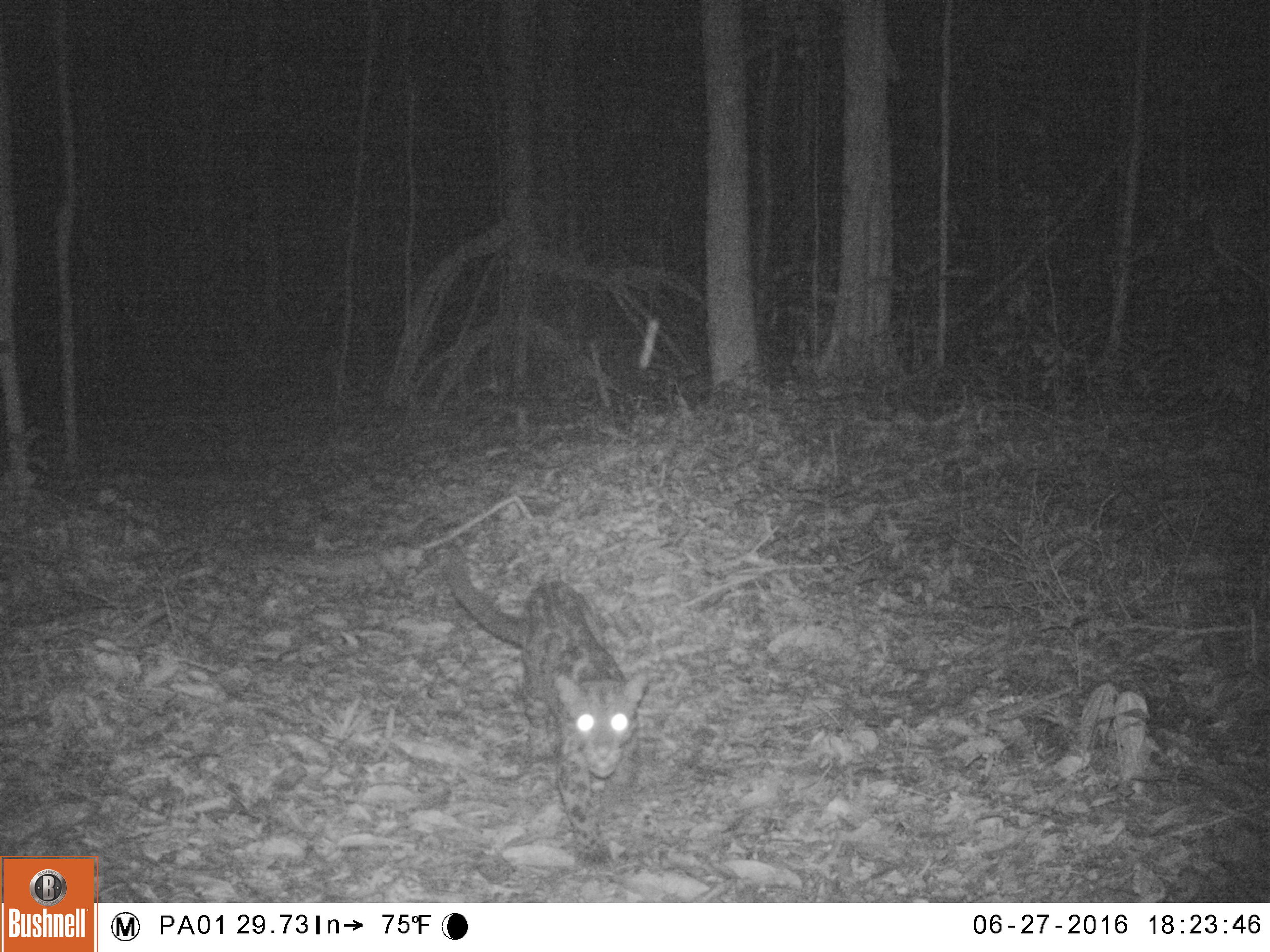
Clouded leopards are a threatened species and it is vital that we learn more about them. Pondok Ambung Tropical Forest Research Station is located in Tanjung Puting National Park, Indonesian Borneo and is run by the Orangutan Foundation in co-operation with Tanjung Puting National Park Authority.
Please donate to support our work.
Thank you.
Injured orangutan rescued from oil palm plantation
Here is an update from our vet, Dr Wawan, on a young orangutan rescued in April. Ashley Leiman, the Orangutan Foundation's director, returned from a visit to Indonesia last week. Ashley managed to get some video footage, of the orangutan having her head stitched, during her visit to the Lamandau River Wildlife Reserve (Central Kalimantan, Indonesian Borneo). We will share this with you shortly but for now, over to Wawan, who has written this post. 'Melan, she is an orangutan that caught by villagers in an oil palm plantation area in Natai Raya village, close to the town of Pangkalan bun, Kalimantan Tengah Province. BKSDA (Conservation and Natural Resources Authority) rescued her from the village in with the Orangutan Foundation's help.
Unfortunately she have a big wound in her head, like she has been sliced by knife or any other sharp object. We could see her skull because the wound is wide open, very pity little Orangutan. She is maybe 3 years old female orangutan.
I decide to clean and stitch the wound. I give her anaesthetic and I try to clean the wound with an Iodine solution and make it clearer from her hairs. After 30 minutes she woke up very suddenly. She is put in her cage at BKSDA office. I see the stitching is good enough and I give suggestion to keep watching on her whether she will scratch and or pull the stitches.
For a moment she is looks good by not scratch it hard, maybe just a gently touching, and some time she use leaves to cover her head to avoid flies come over. I think it is good and hope she will get well by a week.
Then 8 days after the stitching I saw unexpected thing!
The wound become wide open again and wider than before I think. She is in the cage with another Orangutan, I see they were happy keep playing and playing. I suspect because of their playing intensity, they shouldn’t put in the cage together. BKSDA decide to move Melan to Lamandau River Wildlife Reserve, Camp JL. The following day I re-stitched her wound once she was at Camp JL.
I gave her another anaesthetic but his time is was harder as the skin was stronger now and its very hard to pull. But I have one good assistant to help and he keep pulling the skin while I was stitching. That second stitching took 30 minute but looks better and also I give such strong glue with the stitching to make the skin stay together.
Get well soon Melan...We will keep you updated with her progress,
Wawan (Bambang Setyawan)
Orangutan Foundation Vet
Please consider making a donation and support our essential work. Thank you.
New Vet For Lamandau Wildlife Reserve (orangutan release site)
Last month we were awarded a grant by the Gemini Foundation to implement a system of veterinary health care for the orangutans released into Lamandau Wildlife Reserve. This will mean recruiting our own vet, which is very exciting. In Lamandau there is a system of post release monitoring and the orangutans are given supplementary food to help with the transition back to the wild. However, approximately 5 – 6% of all released orangutans are taken back to Orangutan Care Centre & Quarantine at some point, most commonly for small injuries or skin diseases and very rarely for more serious conditions, like Zidane. In common with all orangutan rehabilitation centres the OCCQ is full to capacity so the return of orangutans only puts an extra burden on them. Having a vet in Lamandau will reduce the chance of orangutans returning to the OCCQ, thus minimising potential stress caused to the orangutans as well. Tigor (Lamandau Rehabilitation Camps Manager) and I have finalized the job description and the advert has now gone out. Interviews will begin at the end of the month.
On to less interesting matters, it is report time again. October marks the start of the final quarter for the year; this is the time when we panic about how much or how little money is left over and what is still to be done. The written reports I can handle, it’s the budgets that I struggle with!
I probably share the same expression when I have to tackle Excel! (photo by Sarah Seymour)
Back at University, I remember courses on cell structure and function, zoo-physiology, population genetics, the biology of animal adaptation. I do not remember Accounting 101! What on earth is the meaning of “=SUMIF ('General edger' !$C$49:$C$115,C72, ' General Ledger'!$F$49:$F$115)”?
I love the two photos in this post, courtesy of Sarah Seymour. While the orangutans are undoubtedly cuter, their facial expressions remind me of mine as I look at those Excel spreadsheets.
Orangutan Release Site Almost Ready.
There is always something disconcerting about taking off your wet boots at the end of a day and having a big, fat leech drop out. The one that rolled out of my right sock yesterday, on my way to the new orangutan release site, was almost the size of my little finger. The one that was stuck to the inside of my calf (which I found later in the shower) was still filling up. That’s what you get walking through swamps in Borneo!
Leeches don’t horrify my, the buzzing of mosquitoes and their annoying, itchy bites are, I think, worse. Anyway, the purpose of this blog wasn’t meant to describe the various blood-sucking invertebrates we encounter. Rather it was to tell you of yesterday’s trip to Camp Mangkung in the Lamandau Wildlife Reserve, our newest orangutan release site which was being built by our volunteer teams. The good news is the camp is just about finished. The volunteers have done another great job.

Photos showing the almost finished release site (and some fine artwork) at Camp Mangkung in the Lamandau Wildlife Reserve.
Despite madly fluctuating water levels and pretty rudimentary construction skills the dining hall and sleeping accommodation are complete. All that still needs to be done is to build the toilet and wash rooms and then tidy the site.
We walked into the surrounding forest to scout potential feeding sites. Hanging the tyres won’t be a problem! Which reminds me to say thank you to everyone who has donated so far and to Brigitta, for your latest $20 donation; we already have enough for putting tyres up at Camps JL and Rasak. If you can continue to help us we will soon have enough for the remaining camps.
At the end of the day, rather than go back via the river, Dan Ward (volunteer coordinator) and I decided to walked out. I wanted to see what access would be like when the river is low. It was a great walk, except for the fact I did not find the leeches until I got home!





